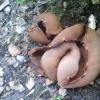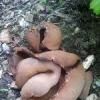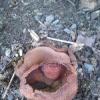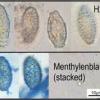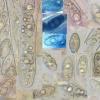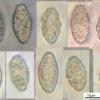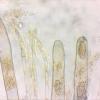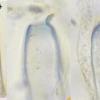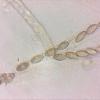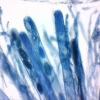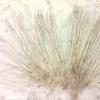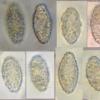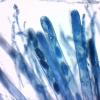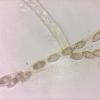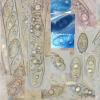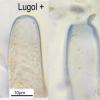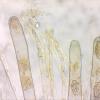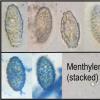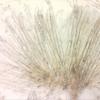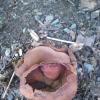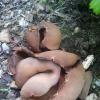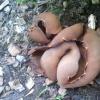
14-07-2016 11:02
Krogevoll Svensen AndreasHello.This Peziza was found among bark. It was als

11-07-2016 23:56
I added this to the end of the "Strange Paraphyses

12-07-2016 22:41
 Rubén Martínez-Gil
Rubén Martínez-Gil
Hola a todos. ¿Tienen ustedes el artículo sigu

12-07-2016 20:09
Hi again I need your opinion on this Helotiale

11-07-2016 09:23
Hi,please, i need help with identification this mu

01-07-2016 20:52
 Rubén Martínez-Gil
Rubén Martínez-Gil
Hola a todos. Subo unas fotos de una Geopyxis que

14-06-2016 09:57
 Blasco Rafael
Blasco Rafael
Hola, necesito de su ayuda para poder esta descono
Peziza
Krogevoll Svensen Andreas,
14-07-2016 11:02
This Peziza was found among bark. It was also dung from horse at the locality.
Chocolatebrown on the outer and inner surface. 5-10 cm big disc.
Was believed to be Peziza vesiculosa, but microscopy doesnt match that species.
Ornamentation of 0.5-1 my high warts and ridges.
20 spores measured:
(20.9) 22.3 - 25.5 (26.6) × (10.4) 11.4 - 13.4 (13.7) µm
Q = (1.7) 1.8 - 2.1 (2.3) ; N = 20
Me = 24.1 × 12.4 µm ; Qe = 2
Which Peziza fits this?
Nicolas VAN VOOREN,
14-07-2016 11:06

Re : Peziza
Pictures are too small!!!
Nicolas VAN VOOREN,
14-07-2016 17:25

Re : Peziza
The spore shape and ornamentation remind me Peziza badioides, but the spores you measured are too large for this species.
Not other idea...
Not other idea...

